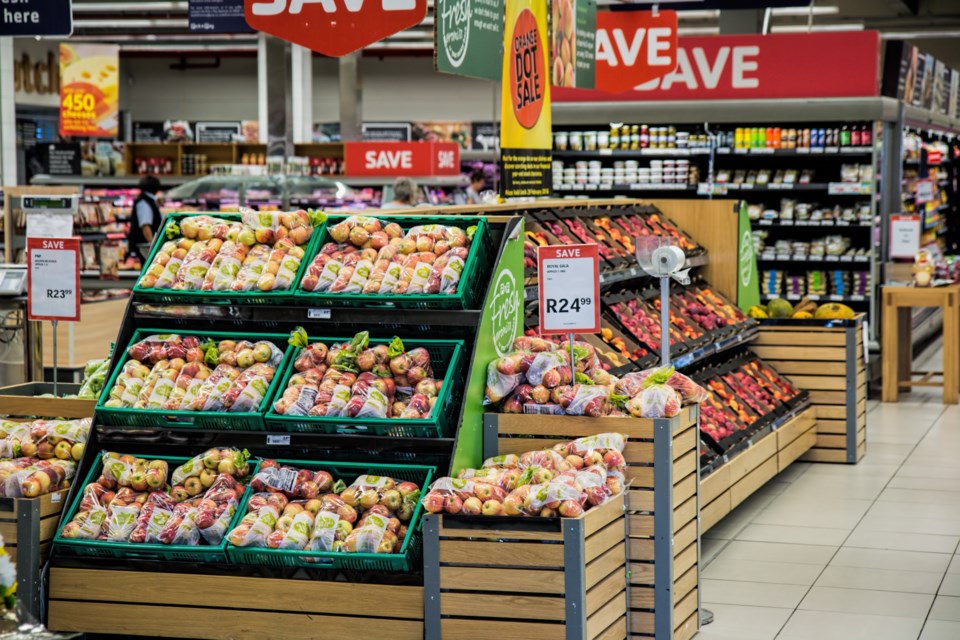“The secret of happiness, you see, is not found in seeking more, but in developing the capacity to enjoy less.” — Socrates
There certainly is a funk in the air this month. Have you felt it? Between the strange weather and what seems like a never-ending news cycle of negativity and chaos, it’s easy to see how people struggle this time of year.
The third Monday in January is considered the gloomiest day of the year. This is the day when winter weather, money woes and memories or regrets from the holidays all combine and weigh heavily on some. It even has a name: Blue Monday. Now, whether it is more depressing than any other day of the year remains scientifically unproven, but is still widely accepted. Either way, staying positive on this day can be tough.
One of the biggest weights on my mind has been the cost of food. It has been a big issue in my world and I’m sure it is in yours, too. Not only have I watched my household grocery totals rise, but the wholesale pricing on our food purchases for work has steadily increased.
What’s the reason? It seems there are many opinions out there. Some say it’s inflation. Others blame deceptive “shrinkflation” or denounce the “greedflation” of the grocery conglomerates. Regardless, it means less in our pockets and more in someone else’s.
Food is essential for all Canadians, whether it be bought at the grocery store or at a restaurant. Through these regular purchases, we are more likely to notice and feel the effects of these dramatic price changes.
According to Statistics Canada, when measured on a year-over-year basis, food prices have outpaced headline consumer inflation, growing faster than 10 per cent in August, September and October 2022.
Our food prices have risen because of a “perfect storm” of factors that have increased costs along the supply chain. The COVID-19 pandemic and the past two years have seen many factors impact the prices we pay at the grocery store. Supply chain disruptions, labour shortages, changes in consumer purchasing patterns, poor weather in some growing regions, tariffs, higher input costs, and higher wages all play a part. Unlike past periods, many of these conditions and pressures are occurring simultaneously or in a more pronounced manner, leading to increases in food prices across the board.
Food is the third-largest of the eight components that make up the Consumer Price Index, following shelter and transportation. As an essential and frequently purchased good, we are significantly affected when food prices increase. Data from the Portraits of Canadian Society survey (conducted in April 2022) reveal 43 per cent of Canadians surveyed reported they are most affected by food inflation. This survey also noted 20 per cent of Canadians are very or somewhat likely to obtain food from community support organizations in the next six months.
Regardless of whether we admit it, COVID-19 pandemic continues to have global ramifications on our health, the economy, and food prices. It has driven price changes by causing disruptions at various stages along traditional supply chains, such as processing, packaging, and transportation. As outbreaks occurred in food-processing facilities, it led to temporary closures, which had a cascading effect on consumer pricing. Additional reconfigurations have occurred as supply chain issues and higher production costs have led to changes by consumers and retailers alike.
Restaurants and grocery stores have had to adapt during the pandemic as Canadians shifted and the foods enjoyed at restaurants were restricted and eating more at home became a necessity. During the early stages, many businesses incurred new expenses. Increased cleaning and personal protective equipment and new safety measures, combined with supplier cost hikes, led some retail operations to increase prices.
Global weather patterns are an important variable for maintaining the supply of food. Erratic weather events affect the supply and production of our food. These reduced supplies during a time of higher demand naturally result in higher prices for us at the store.
The Russian invasion of Ukraine has resulted in pressure on global food prices due to the large role these two nations play in both agricultural and oil production. Russia is a major producer of nitrogen, phosphorus and potassium — all the key components of fertilizer.
Russia and Ukraine are, respectively, the first- and fifth-largest global exporters of wheat. This conflict has caused great uncertainty in global wheat markets, resulting in higher prices. The price of wheat began to rise in December 2021, when concern of war between the two countries became a grim reality.
What does the future hold? How far will our grocery budget go? Only time will tell. But what can we do in the meantime? I suggest we look to the wisdom and skills of our great-grandparents. Plant a vegetable garden, buy in bulk, preserve when you can, plan for the worst and hope for the best. Help your neighbours and take care of those around you. Those same lessons got our families through the Great Depression and are as relevant now as they were then.



